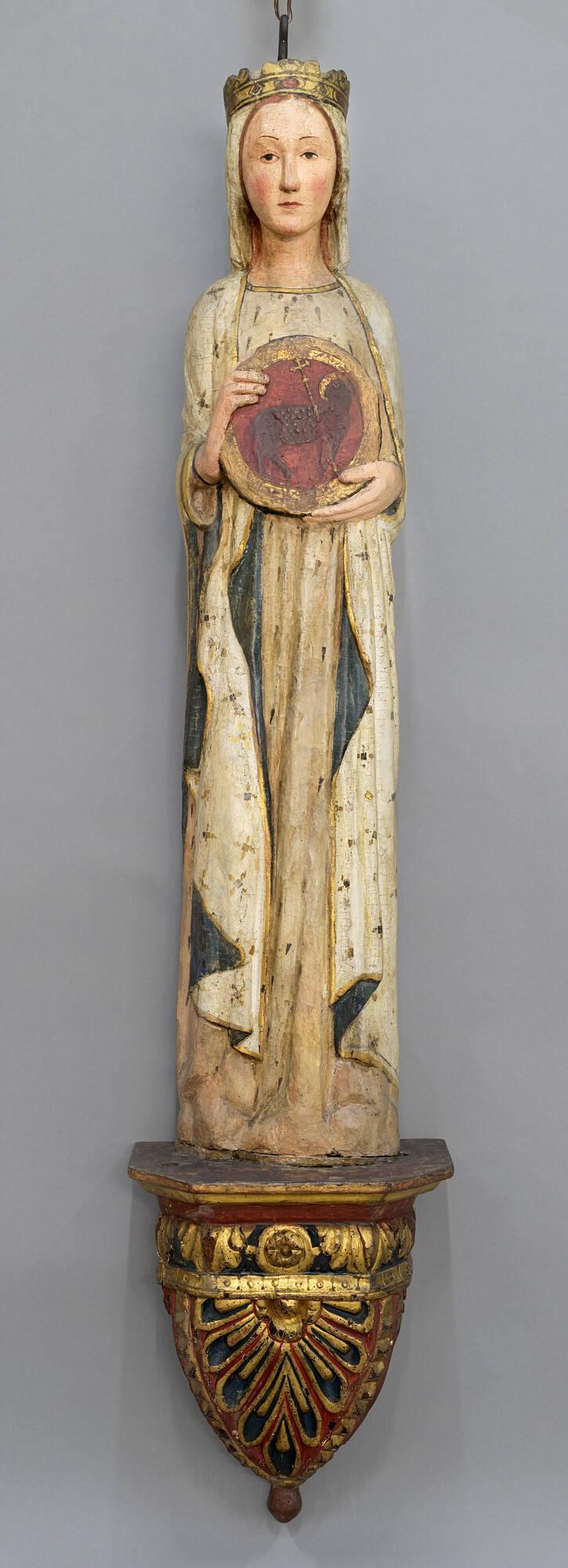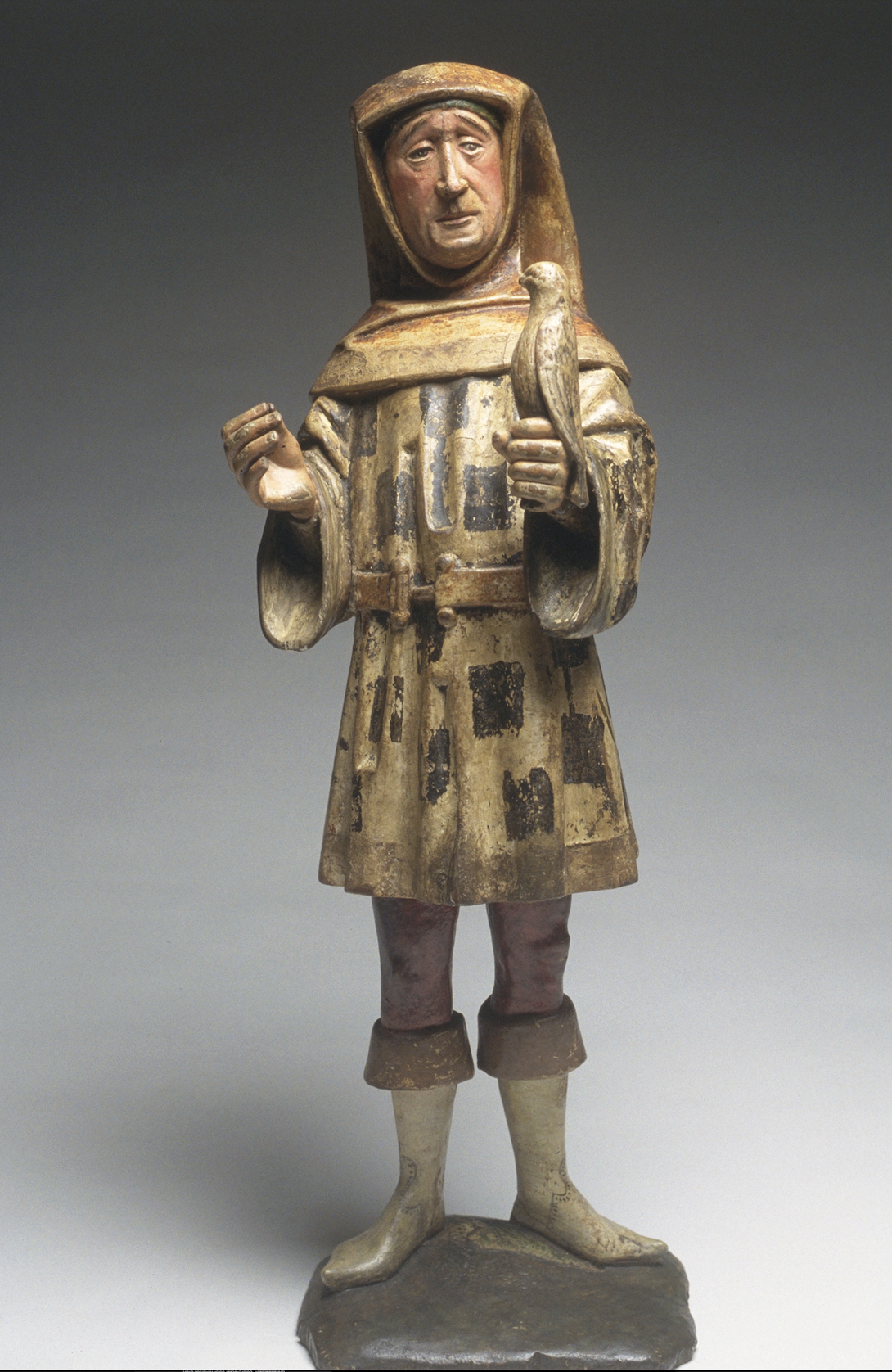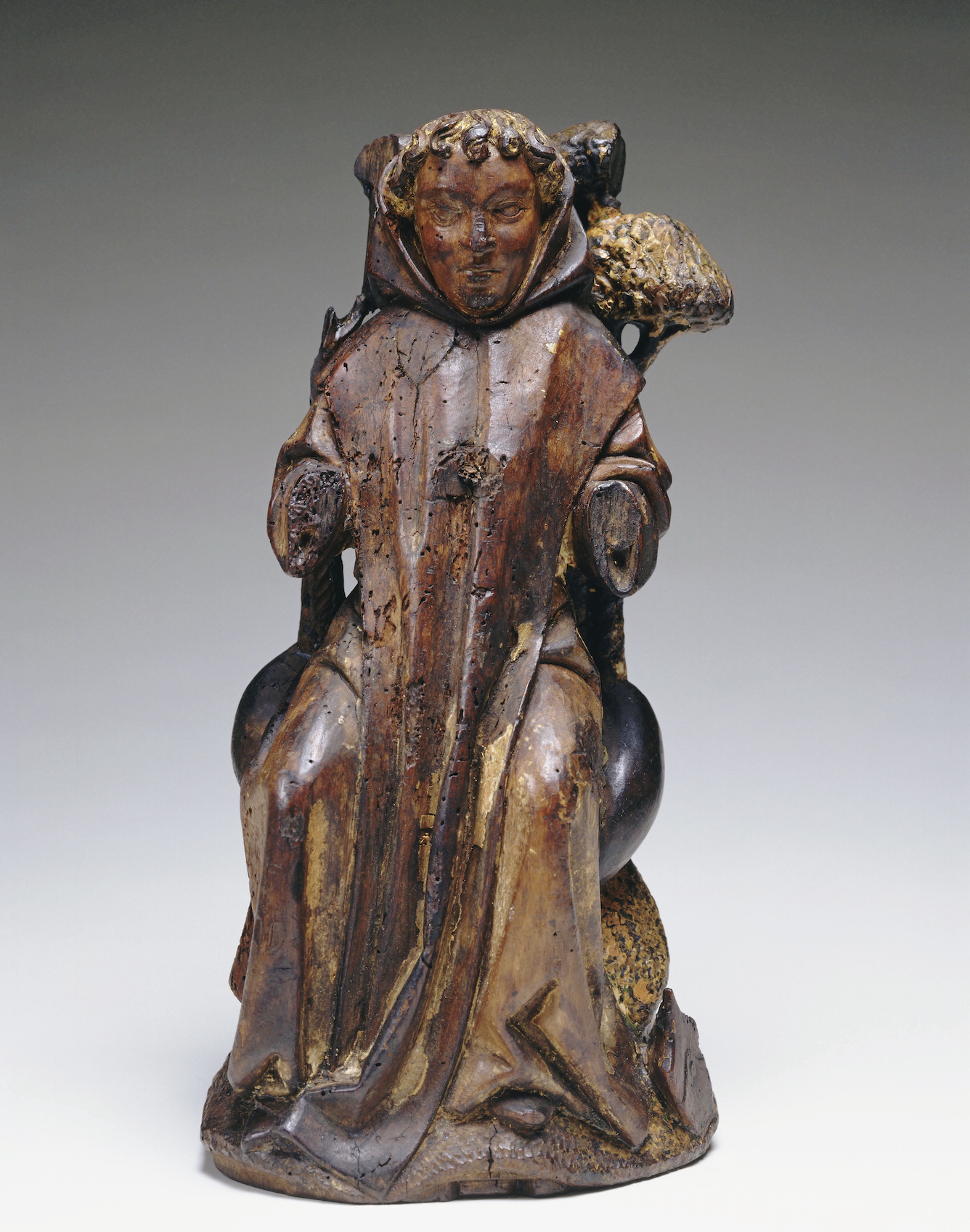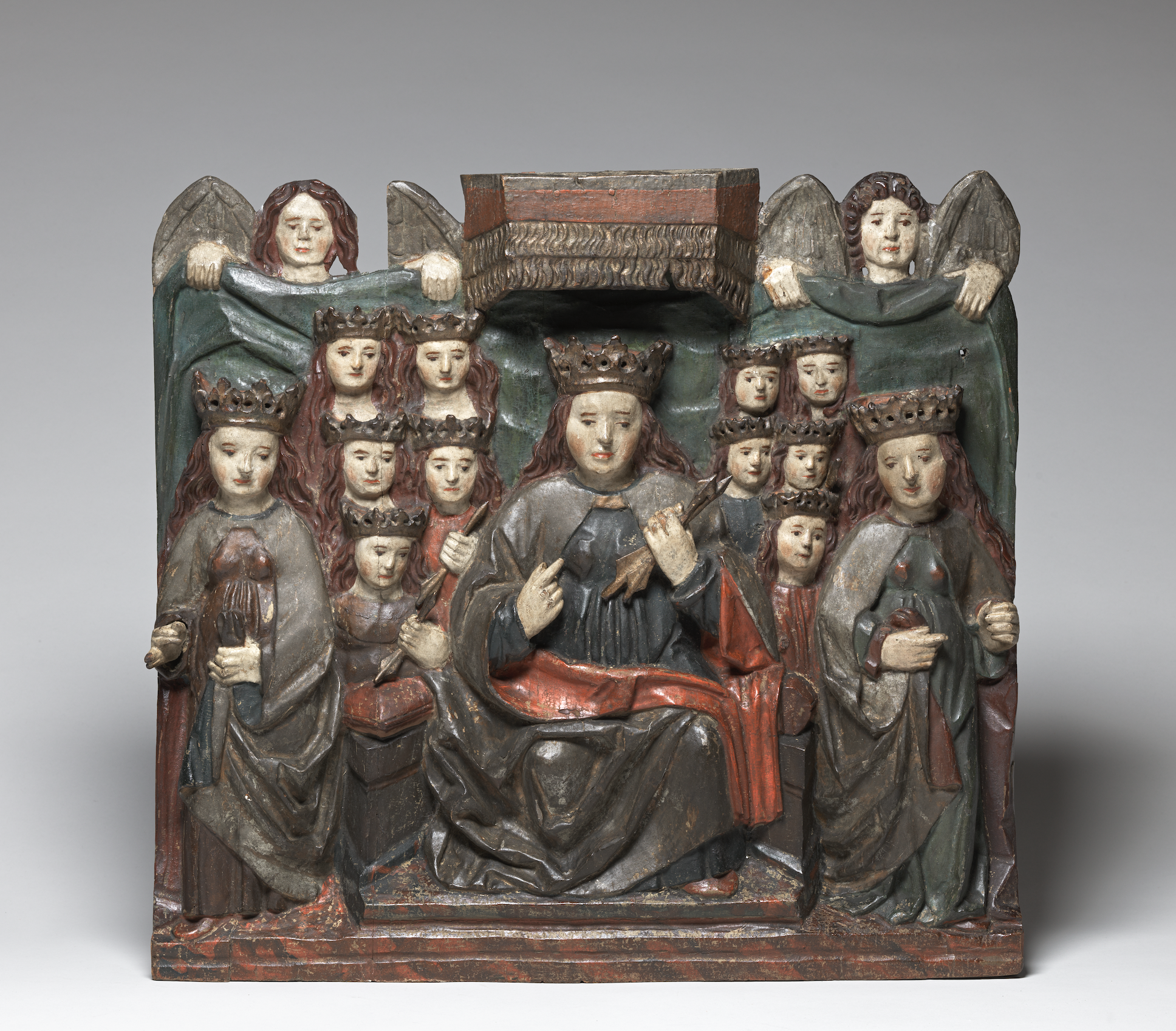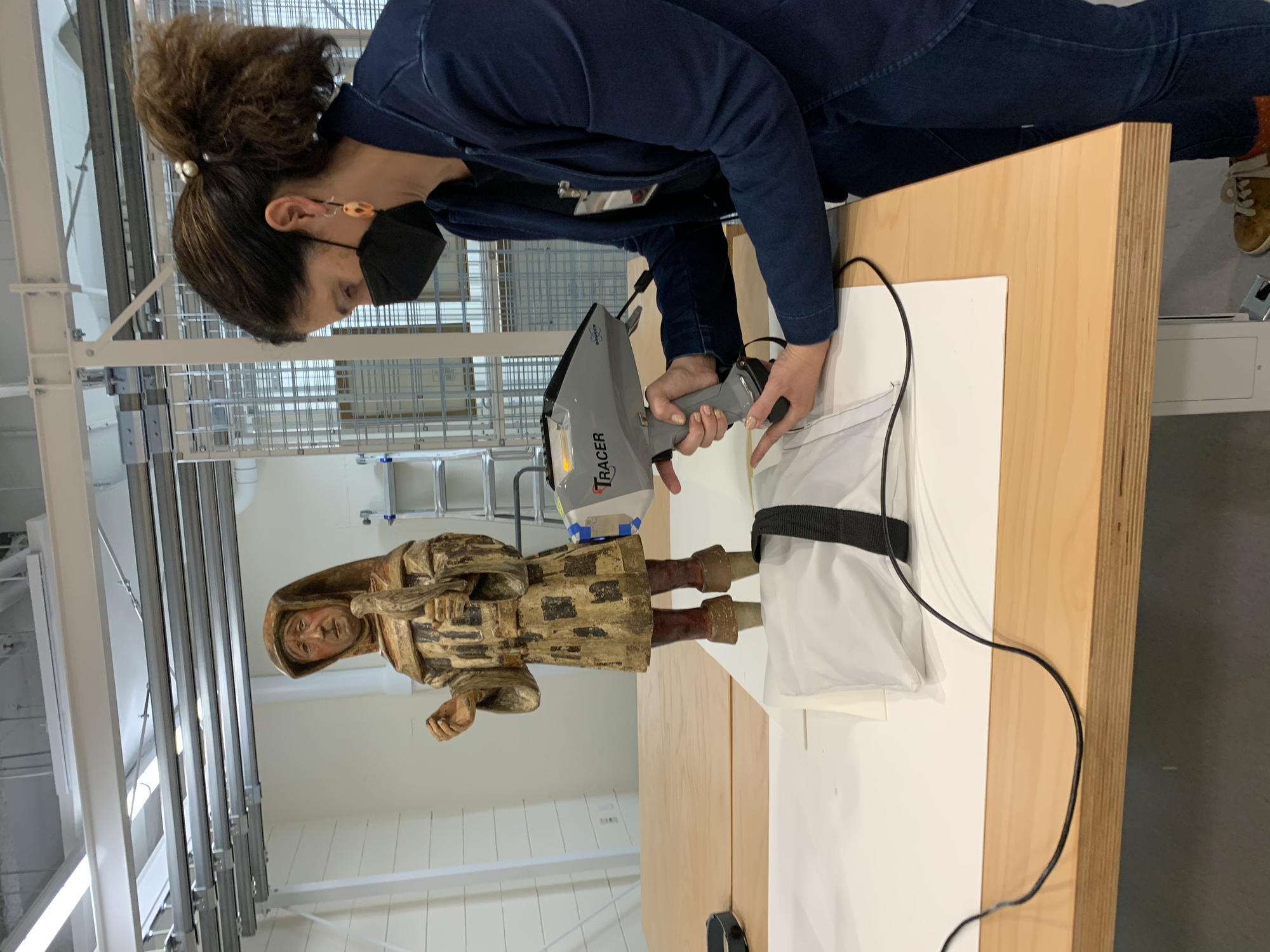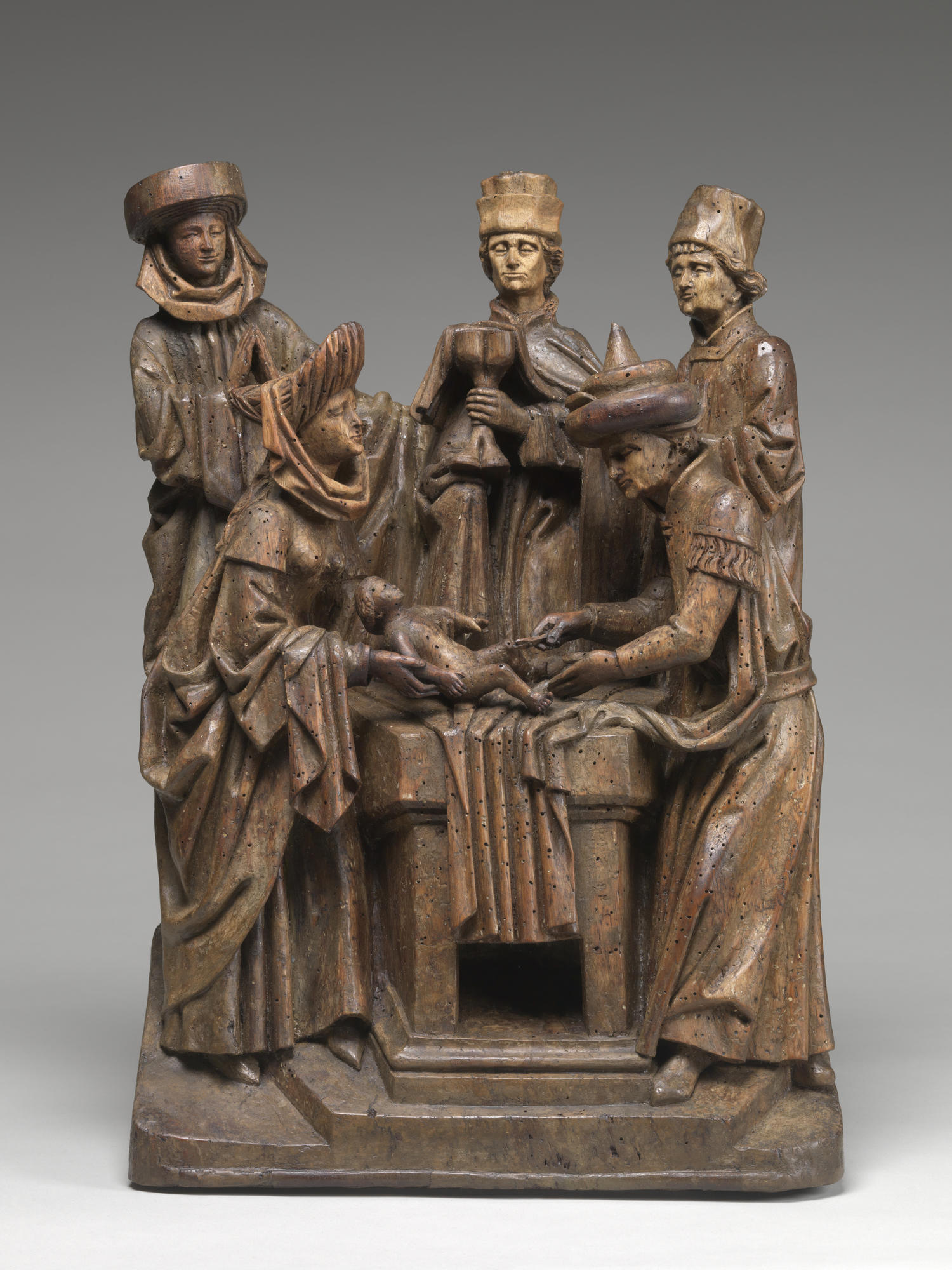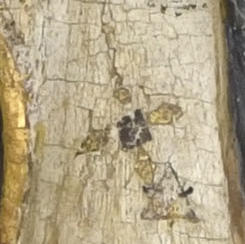Last year, the Gardner collaborated with the Smith College Museum of Art (SCMA). In preparation for the upcoming exhibition at SCMA, “Brought to Life: Painted Wood Sculpture from Europe, 1300-1700,” four of the sixteen painted wood sculptures were selected for conservation and technical examination. “Brought to Life” investigates the materials, techniques and reception of painted wood sculpture in Europe between the 13th and 18th centuries. Painted wood sculptures from this time and place often represent sacred figures from Christianity. As objects of prayer and devotion, the sculptures were created to look alive. Historical accounts recorded several instances of such sculptures appearing to speak, bleed, move or cry. Teams of specialized artists collaborated on these sculptures in workshops by first intricately carving blocks of wood and then adding paint and gilding (gold decoration). The painted and gold decoration seldom survives fully intact, either due to repainting (sometimes repeatedly), fading, loss, or changes in taste that led to the removal of pigment and gold on the surface.
One of the key themes of the exhibition is how conservation and technical analysis play an important role in our understanding of these sculptures today. SCMA has no in-house conservation lab or conservators but consulting conservator Valentine Talland (former Senior Objects Conservator) brought in Jessica Chloros (Objects Conservator) and Greta Llanes (Conservation Technician). Together they studied the four sculptures selected for conservation and technical examination: the Falconer, The Circumcision of Christ, Saint Ursula and the Virgin Martyrs, and Saint Fiacre. XRF analysis of the Falconer revealed, among other things, that the flesh was painted with vermilion mixed with lead white, the tunic is painted with lead white and the black and gold decoration is gold leaf applied on top of tin leaf.
